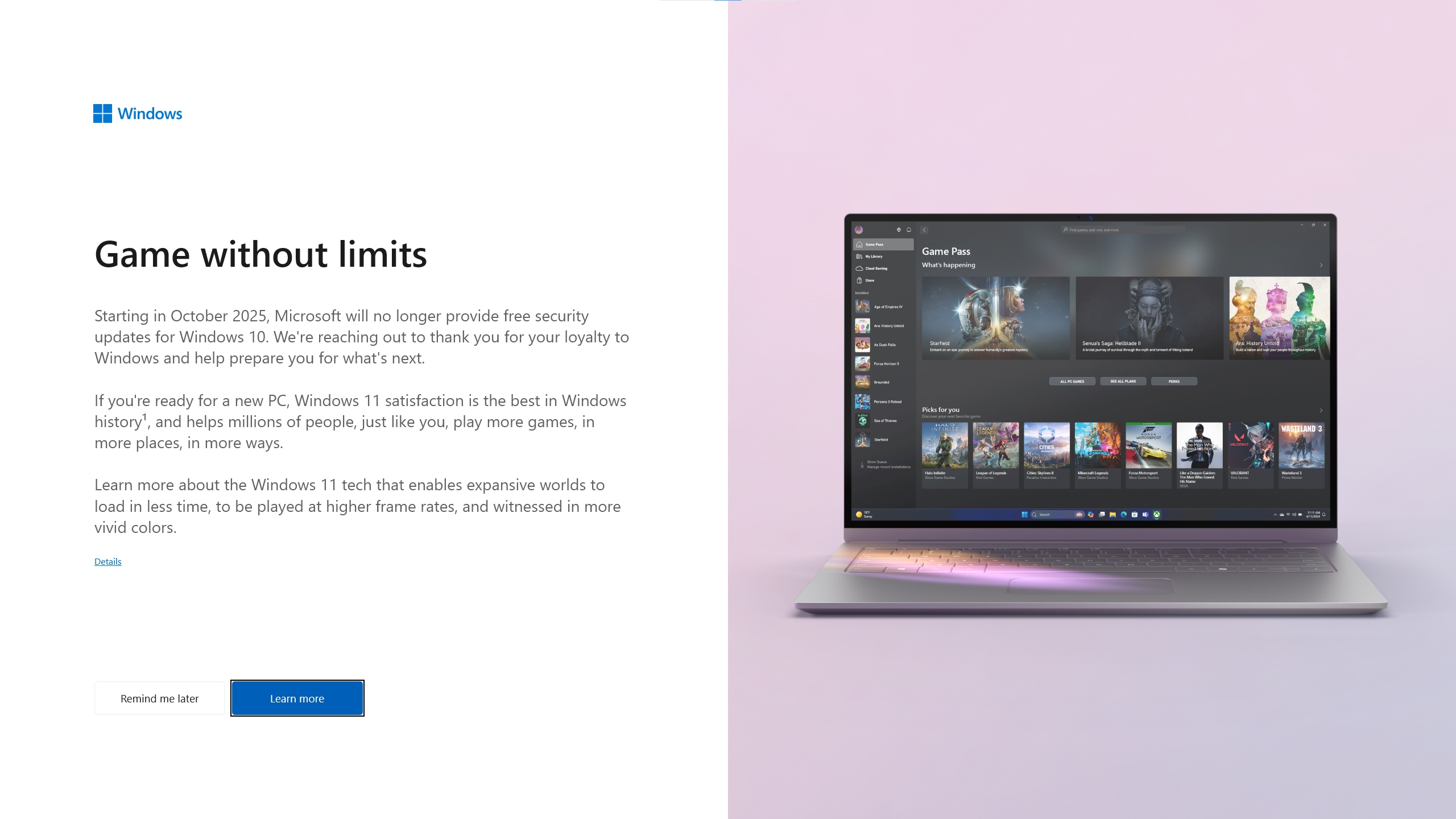Microsoft has frequently used this kind of reminder to encourage upgrades.

One of several full-screen messages that has been sent to Windows 10 users over the last few days. Credit: Kyle Orland
Windows 10’s free, guaranteed security updates stop in October 2025, less than a year from now. Windows 10 users with supported PCs have been offered the Windows 11 upgrade plenty of times before. But now Microsoft is apparently making a fresh push to get users to upgrade, sending them full-screen reminders recommending they buy new computers.
The reminders, which users have seen within the last few days, all mention the end of Windows 10 support but otherwise seem to differ from computer to computer. My Ars colleague Kyle Orland got one focused on Windows 11’s gaming features, while posters on X (formerly Twitter) got screens that emphasized the ease of migrating from old PCs to new ones and other Windows 11 features. One specifically recommended upgrading to a Copilot+ PC, which supports a handful of extra AI features that other Windows 11 PCs don’t, but other messages didn’t mention Copilot+ specifically.
Ars Video
How Lighting Design In The Callisto Protocol Elevates The Horror
None of the messages mention upgrading to Windows 11 directly, though Kyle said his PC meets Windows 11’s requirements. These messages may be intended mostly for people using older PCs that can’t officially install the Windows 11 update.
The full-screen reminders also don’t mention the one official escape hatch that Microsoft provides for Windows 10 users: the Extended Security Update (ESU) program, which will offer a single additional year of security updates to home users for a one-time fee of $30. Schools, businesses, and other organizations will be able to get up to three years of ESUs, but years two and three of the program aren’t being offered to regular consumers.
Though this is a fresh wave of full-screen update reminders, it’s far from the first time Microsoft has used this tactic. Microsoft sent a wave of full-screen Windows 11 upgrade messages to Windows 10 users in early 2023. Toward the end of Windows 10’s free upgrade period in 2016, users of Windows 7 and 8 were shown a full-screen message reminding them to update before the offer expired. In 2014, Windows XP users were warned of the upcoming end of support with a pop-up message; Windows 7 users received similar pop-ups in 2019.
Paying for ESUs or buying a new PC isn’t the only way to keep getting Windows updates after October 2025. Supported PCs can install Windows 11 directly, though sometimes Windows 10 PCs will need some configuration changes. And the experience of running Windows 11 on an older “unsupported” PC can occasionally be annoying, but the day-to-day user experience is surprisingly good most of the time.




